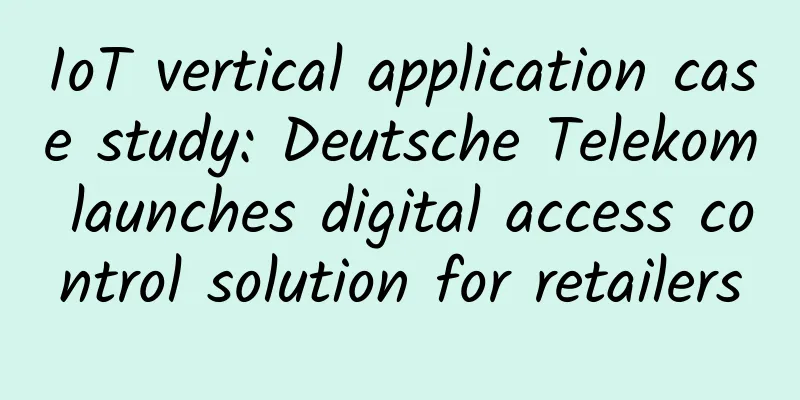|
Background of the Solution In 2020, the COVID-19 pandemic has severely disrupted social connections and changed our daily lives. To date, the global pandemic has caused nearly 30 million cases and 1 million deaths, and the spread of the epidemic shows no signs of slowing down in some areas. As medical and research institutions race to develop vaccines to combat the deadly virus, organizations and businesses are scrambling to create government-compliant solutions to cater to consumers' changing preferences during this uncertain time. In order to slow the spread of the virus, many cities first implemented measures including physical distancing and government-imposed lockdowns. In some areas, businesses were forced to close and the public was confined to their homes. In places with less stringent regulations, retail outlets and businesses can operate, but must follow standard procedures set by local governments, such as physical distancing, reduced staff numbers, shortened operating hours, and customer registration or "check-in" measures for contact tracing. However, being open does not equate to being able to generate sustainable sales. Public fear of the virus, coupled with strict regulations, has had a negative impact on sales activity at retail outlets, especially discretionary spending on non-essential items. For example, sales at U.S. apparel and accessories stores fell 35% in the first eight months of 2020 compared to the same period last year. GNC, Pier 1 Imports, Bed Bath & Beyond, AT&T, and more retail giants have or are expected to close thousands of stores in 2020. According to Omdia's 2020 IoT Endpoint Revenue Report, the expanding IoT endpoint market is expected to generate more than $500 billion in revenue by 2024. In addition to consumer solutions, IoT endpoints are also used in commercial and retail scenarios - where large gatherings of people are prohibited. Deutsche Telekom recognized that the severe economic situation under the epidemic created an opportunity for it to provide digital access control systems to keep the retail industry vibrant. In June 2020, the company announced a sensor-based retail store people counting solution designed to help manage the number of customers in retail stores. Founded in 1995, Deutsche Telekom is one of the largest telecommunications companies in the world. It is headquartered in Germany and has representative offices in more than 50 countries around the world. At the end of 2019, the company had 211,000 employees and annual revenue of 80.5 billion euros (94.1 billion U.S. dollars). Deutsche Telekom provides fixed voice broadband Internet, mobile communications, IPTV and ICT solutions and services to consumers and businesses. The company is extremely successful as a telecommunications operator, with 184 million mobile users, 27.5 million fixed network lines and 21 million broadband lines worldwide. Due to pandemic regulations, retail outlets must implement strict hygiene measures and limit the number of people in the store. As a result, merchants have to assign dedicated personnel to manage the flow of people at the store entrance. Deutsche Telekom's digital access control solution (also known as "People Counter") can help retailers solve this problem effectively and systematically. The solution involves installing two columns at the entrance, which are connected to each other via a photoelectric barrier. The two 1.60-meter-high columns are powered by typical power sockets. Depending on the size of the store and local regulations, the maximum capacity allowed in each venue can be customized. When someone enters or leaves the store, the person walks between two pillars and briefly interrupts the light, infrared or laser photoelectric barrier. The digital access control system will then automatically reflect the changes, showing the increase or decrease in the current number of customers. In addition, green and red signal lights are installed on the pillars. The green light welcomes customers into the store; when the red light comes on, it reminds customers that the number of customers has reached the upper limit and they must wait until the green light comes on before entering. If someone ignores the red light signal and tries to enter the store, a built-in alarm will sound. Remote alarms can also be set on the mobile terminals of relevant employees or store owners so that they will be notified when violations occur. The main functions of "People Counter" are to provide accurate visitor registration, understandable signals, cloud analytics, and flexibility for expansion and integration. This digital access control solution is able to register accurate number of people and customer flow, while freeing up employee resources to focus on core tasks, rather than having employees stand at the entrance or stare at the door all day - this helps avoid the high cost of hiring additional staff in the store. Deutsche Telekom's complete solution includes sensors, connectivity, IoT platform access, analytical software and installation. There are different technology options for sensor/gateway connectivity, including LTE, LoRaWAN, Wi-Fi and Ethernet. Deutsche Telekom claims that for the initial investment of 979 euros-1970 euros (depending on the package purchased), the average amortization time is less than three weeks. Traffic lights are common signals for indicating passage or parking, so there is no need to educate customers when installing a digital access control system. The data collected by this IoT solution is securely transmitted to the cloud in real time through a gateway and wireless network. Business owners or relevant employees can access the web interface to study valuable passenger flow information, thereby improving the efficiency of personnel and inventory planning. In addition, this system can provide additional sensors for large commercial venues with multiple entrances. It can also be expanded to smart building applications such as energy management, electronic time recording and smart storage. Figure 1: Global IoT device installed base – Commercial and industrial electronics Embedded connectivity has become one of the key requirements for electronic terminals to communicate and operate more effectively. IoT terminals are everywhere in homes, businesses and public places, serving specific needs in our daily lives. According to Omdia's IoT Terminal Market Tracker report, by 2025, the number of IoT terminals installed in the commercial and industrial sectors worldwide is expected to increase from 5.6 billion in 2019 to 13.8 billion, a growth rate of 149%. This growth is equivalent to a compound annual growth rate (CAGR) of 16.4% during the forecast period. Similarly, Omdia expects IoT terminal revenue to grow significantly, reaching $180 billion in the commercial and industrial sectors by 2024. The COVID-19 pandemic has indeed caused great disruption to our lives, but it has also promoted the rapid popularization of IoT terminals in new application areas. In addition to the retail industry, solutions such as Deutsche Telekom's "People Counter" have also been introduced in homes, fitness and entertainment venues, medical facilities and nursing homes, financial institutions, public administration buildings and event venues. For example, MachineSense has launched FeverSense, an IoT-based automatic body temperature scanning system that can be retrofitted on existing structures. The automatic body temperature scanning system is particularly useful for preventing the spread of the epidemic because it does not require a person dedicated to measuring body temperature in front of each door. The system will scan and store all body temperature data. If it detects that someone has an elevated body temperature, it will issue an alarm so that appropriate measures can be taken to isolate the person. Online platforms and IoT terminals play a key role in contact tracing. Google and Apple have collaborated to develop an application programming interface as a framework for contact tracing applications on Android and iOS phones. These applications will rely on Bluetooth communication between terminals to track the distance and time of contact with another person, and ultimately determine the risk of virus transmission. Examples of such applications include NearForm in Ireland, COVID Alert in Canada, and TraceTogether in Singapore, which are used to track cases that may result from physical contact in public places. To help with contact tracing, facial recognition technology can play an important role in automatically registering people. In some countries, contact tracing mobile apps require manual registration or scanning of QR codes to "check in", and facial recognition technology can help fully automate and digitize this process, avoiding the hassle of taking out mobile terminals and launching apps. However, many countries are unlikely to deploy such a convenient solution due to various obstacles. First, privacy issues are the primary reason why the public opposes constant government surveillance. Second, the huge expenses involved in installing the necessary infrastructure across the country and setting up digital platforms to manage data have deterred many local governments with tight budgets. Third, to cope with such a large-scale project, local governments must create a dedicated agency to oversee and work with the private sector. This returns to the first point, if public information is shared or used for profit without consent, it may cause public uneasiness. Fourth, when a centralized, nationwide database of residents is leaked, data security issues may cause great panic. Although some technologies may be scrutinized, it is undeniable that IoT terminals have brought great convenience and improvement to our lives in many ways, especially during the epidemic. In a period when social distancing helps prevent the spread of deadly viruses, Deutsche Telekom's digital access control system provides retailers with an immediate solution to comply with new regulations, as well as a scalable and intelligent system - which may also be integrated with other technologies (such as cameras and body temperature scanners) to achieve a more comprehensive IoT solution. |










![[Smart Farmers] The common "enemy" of humans and animals: What is the "coronavirus"?](/upload/images/67f2490fd7866.webp)